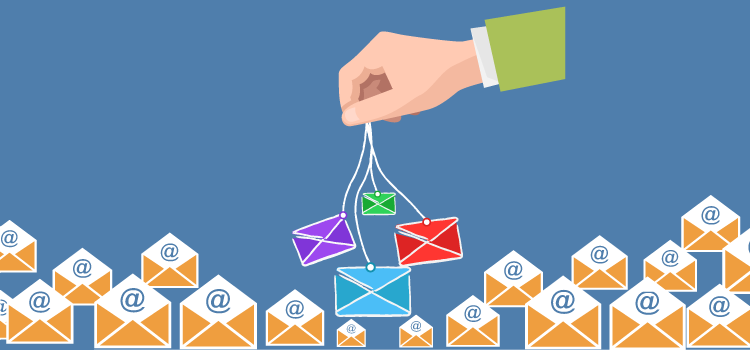4 Keys for Getting Your Inbox Under Control with Automation
An overflowing inbox is a fact of life today, and managing it can consume your day if you let it. There are group emails, promotional mailings, tasks, meetings, lead emails, personal emails, follow-ups emails and the list goes on.
Getting a grip on email is important, and automation can help.
Here are four keys for using automation to tame your email inbox and cut down on the time you spend managing it.
1. Trap Email with Filters
Make your life easy and create email filters whenever possible. If properly used, email filters can automatically take care of the lion’s share of your email sorting.
For instance, you can use email filters for all your promotional mailings. When you get a new promotional mailing in your inbox that you plan on continuing to receive, add the email address to your promotional email filter so future mailings are tagged and sorted automatically. These mailings can accrue under a promotional folder you’ve established. Or you can tag them as low-importance email, if you prefer keeping them in your main inbox but want a quick way to identify what to handle later.
Let’s say you have subscribed to promotional emails, now set-up a filter using those email IDs and all the mails falling under this category will get accumulated under one “Promotional” folder.
2. Use Response Templates
If you receive emails that need a response but the response can be a generic one, consider pre-written “canned” responses. There is no point typing out the same response repeatedly, and automating responses can save lots of time.
The best way to do this with an email template. For example, if you use Agile CRM for tracking your customer emails (and you should–it enables you to see when your emails are opened, among other features), you can create pre-defined templates and sync those templates to your Gmail or Office 365 account.
You should have five to seven canned responses at the ready, but don’t create too many or choosing the right response might take as long as creating the emails from scratch.
3. Automate Delegation
When you receive emails that are better answered by someone else, use automation and collaboration features for faster delegation.
A couple good automation tools for email delegation include Hiver for Gmail and MailEnable for Outlook, although there are other tools, of course. MailEnable, for instance, allows you to share labels and folders with other users.
Tools such as these help you share emails, tasks and track the status of correspondence more easily. You can also add notes on these items for better understanding.
4. Detach the Attachment
If you get many emails that come with attachments, one way to save time is through consolidating these attachments and moving them to a central repository. These can make mobile email browsing easier, and it also speeds up the process of finding files that were sent through email.
You can automate the saving of attachments with services such as Zapier so they automatically go to your Google Docs, Dropbox or OneDrive account.
One Zapier recipe you might consider:
1. Integrate Zapier with your Gmail and other platforms that stores files.
2. Add a new custom label for Email attachment under Zapier.
3. Customize the label by including different platforms with folder names.
4. Go to the platforms mentioned in Zapier and add the same folders names.
5. Use this Zap while sending a mail and the attachment will automatically get saved under its assigned platform and folder.
Bonus Tip: Shortcuts is the Key
If you’re not using keyboard shortcuts for your email, you’re missing the boat. Keyboard shortcuts are huge time-savers, and email clients such as Gmail and Outlook both support shortcuts extensively. Use keyboard shortcuts excessively. The shortcuts present on Gmail & Outlook are both promising.
To turn on keyboard shortcuts for Gmail, Click on the top right-hand side “gear icon” then click on “Settings”. Go to “General” tab, look for “Keyboard shortcuts,” and select “keyboard shortcuts on.” Click “Save Changes” and you’re ready to go.
Some of the more important shortcuts you should use when working with Gmail:
· For Composing Mail – Use c
· For Composing Mail (in a new tab) – Use d
· For Mail Search – Use /
· To Go Back To Threadlist – Use u
· For New Conversation – Use k
· For Old Conversation – Use j
· To Select Conversation – Use x
There’s no way to completely eliminate the burden of email. However, these keys will help you keep it a manageable burden.

No Comments